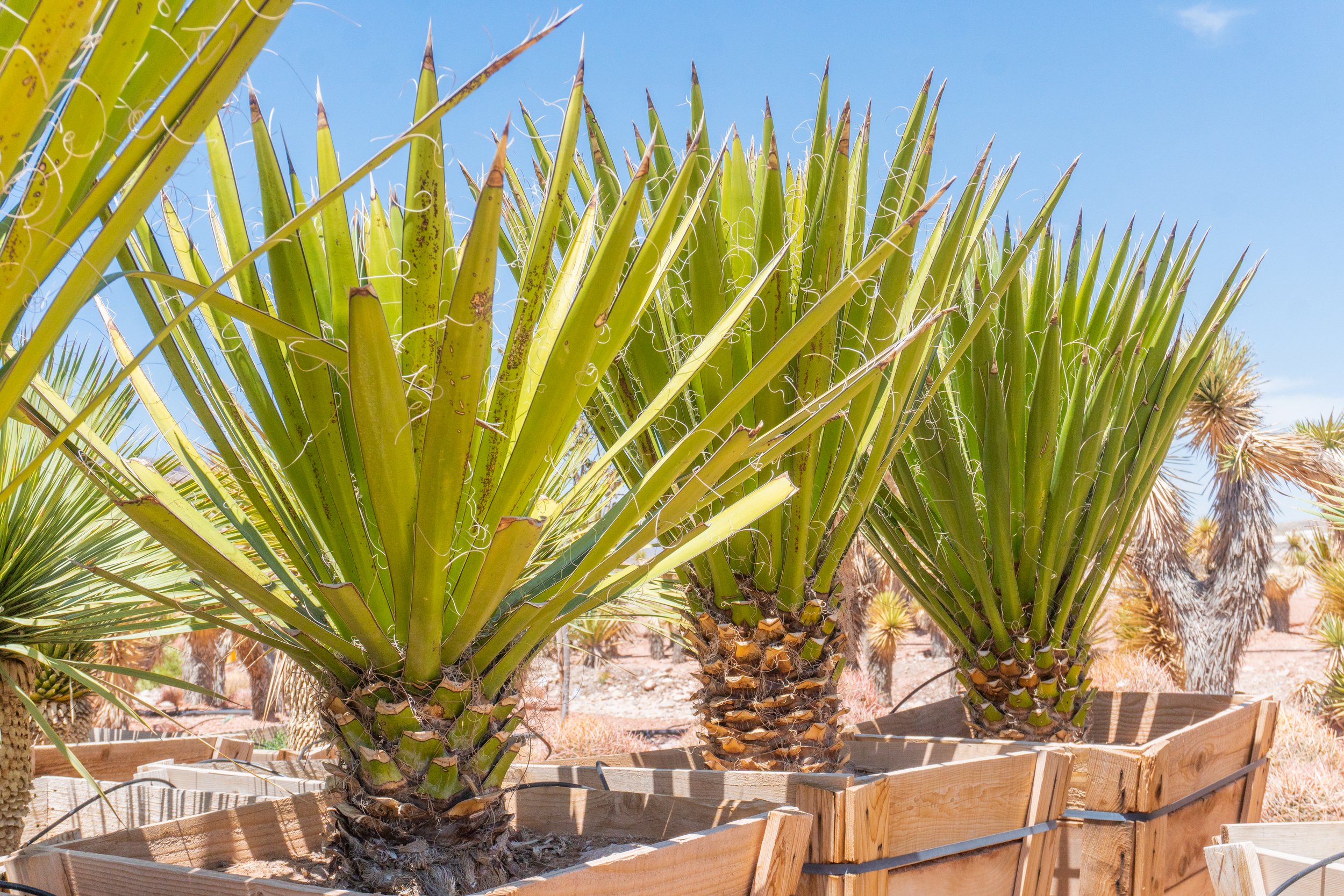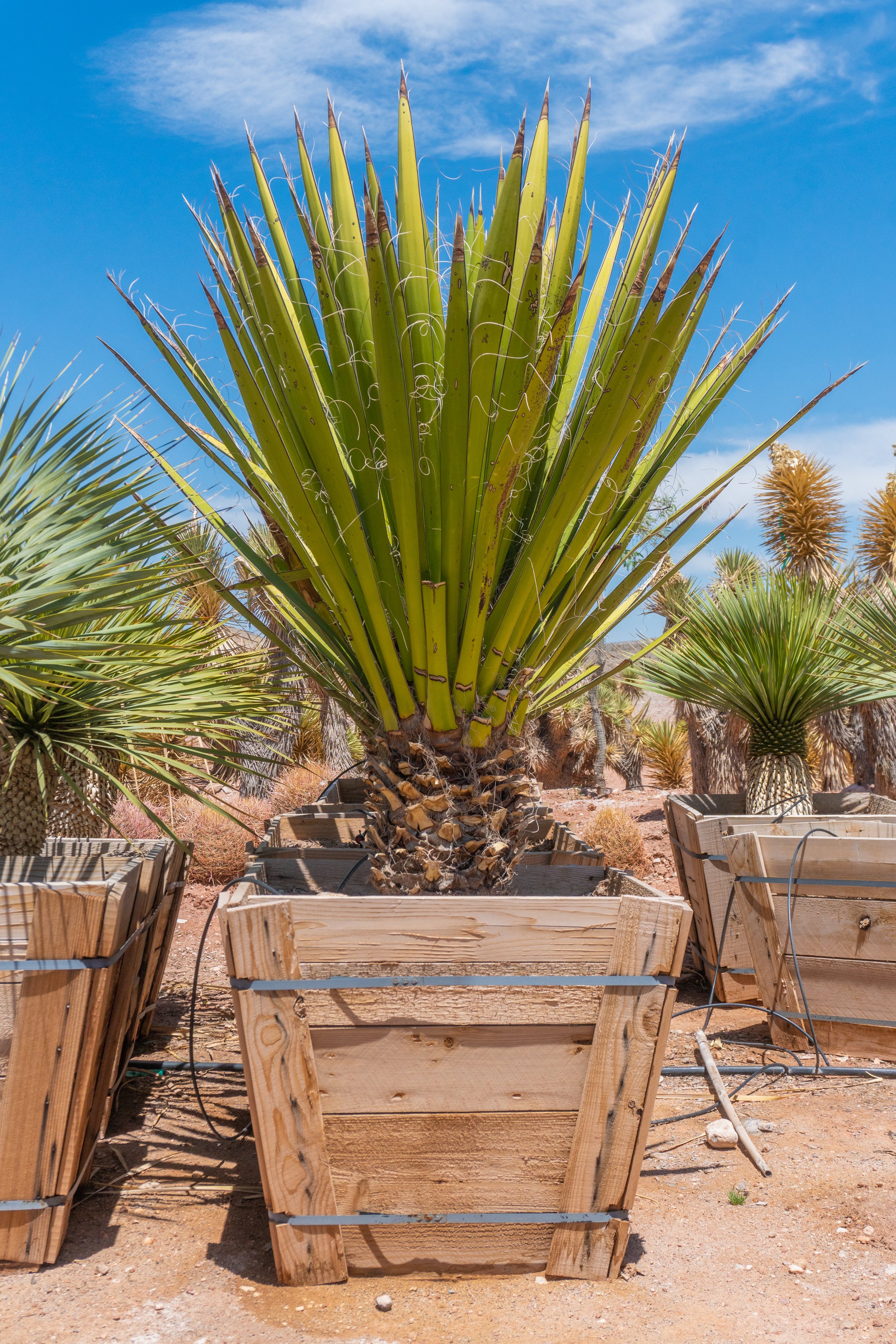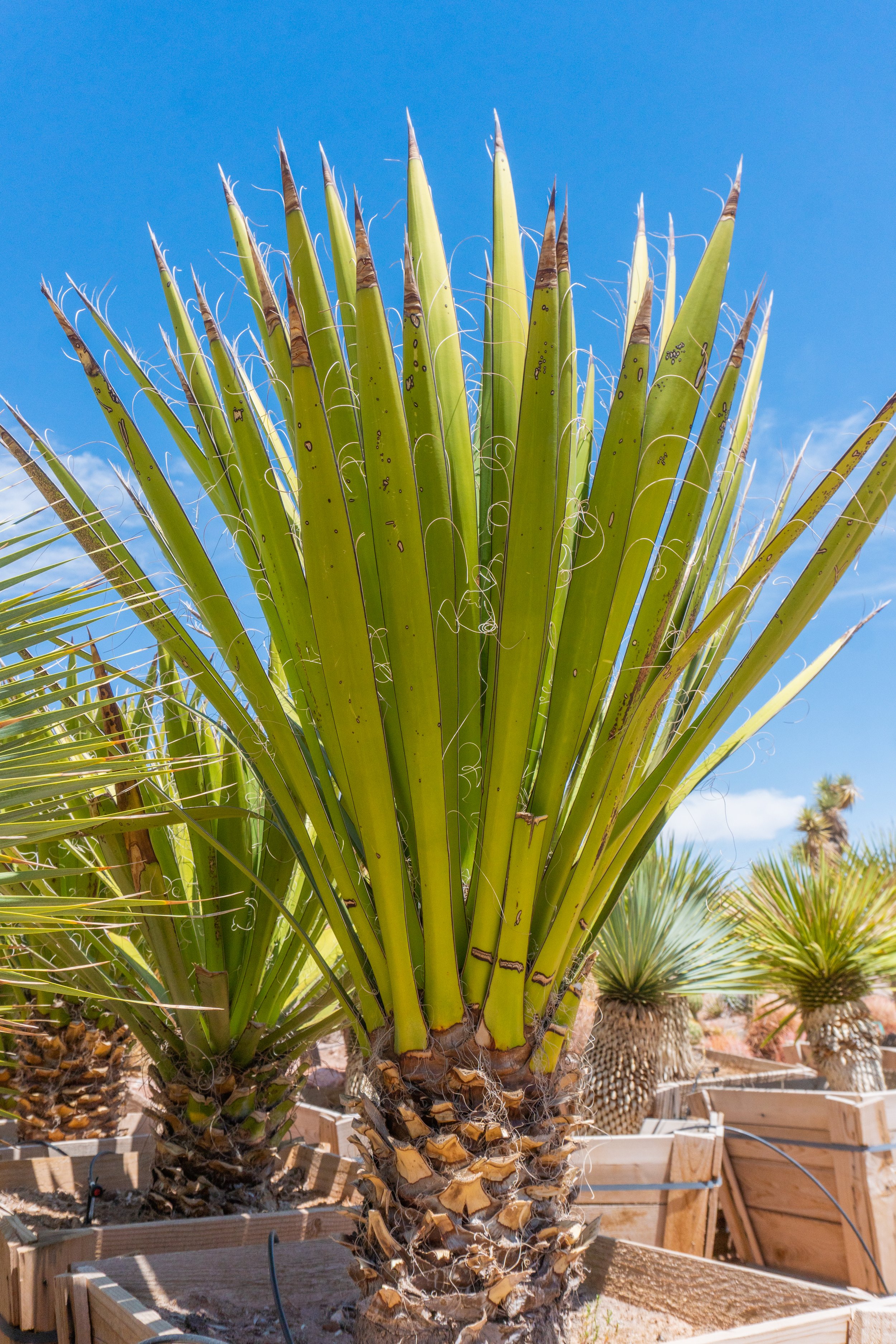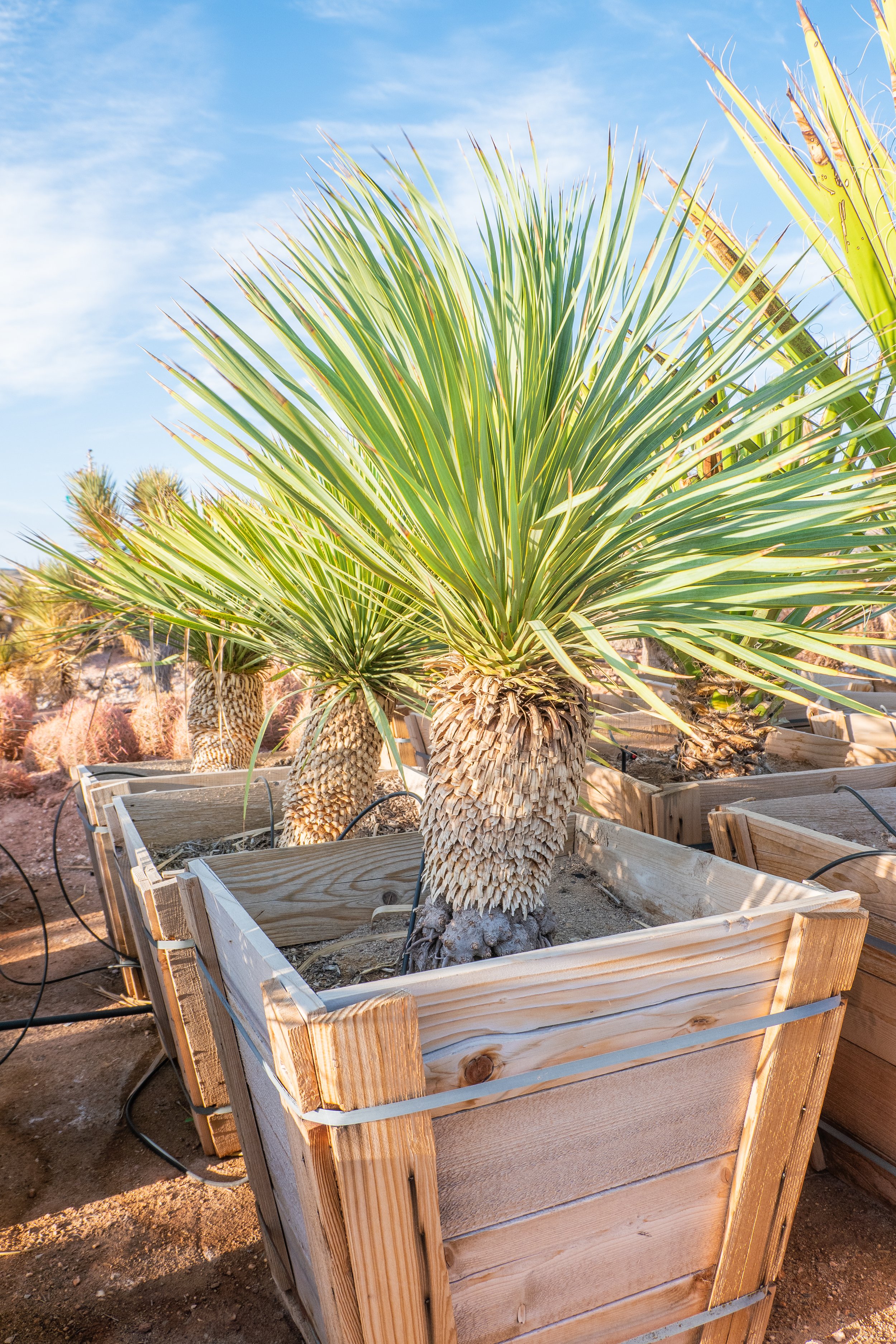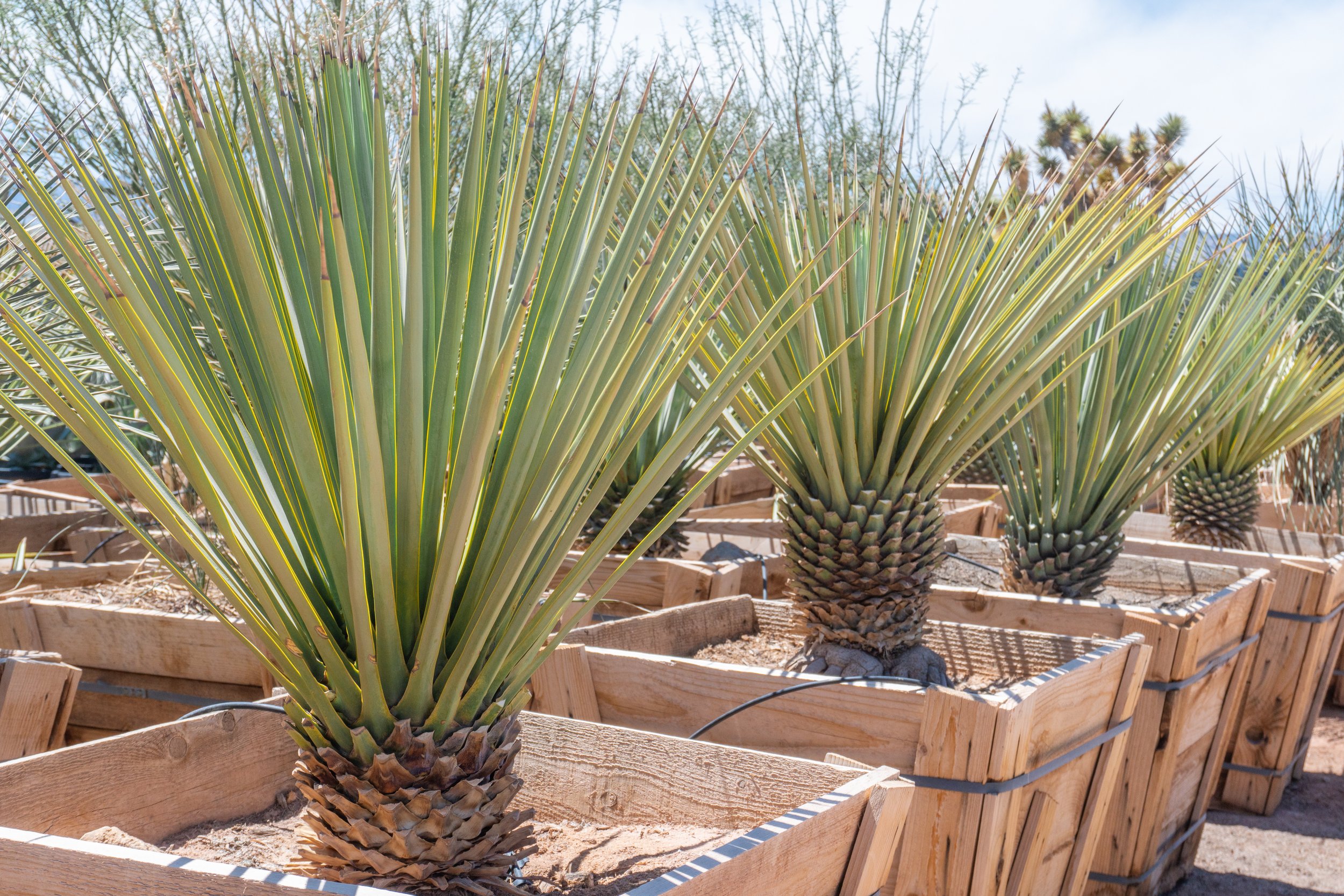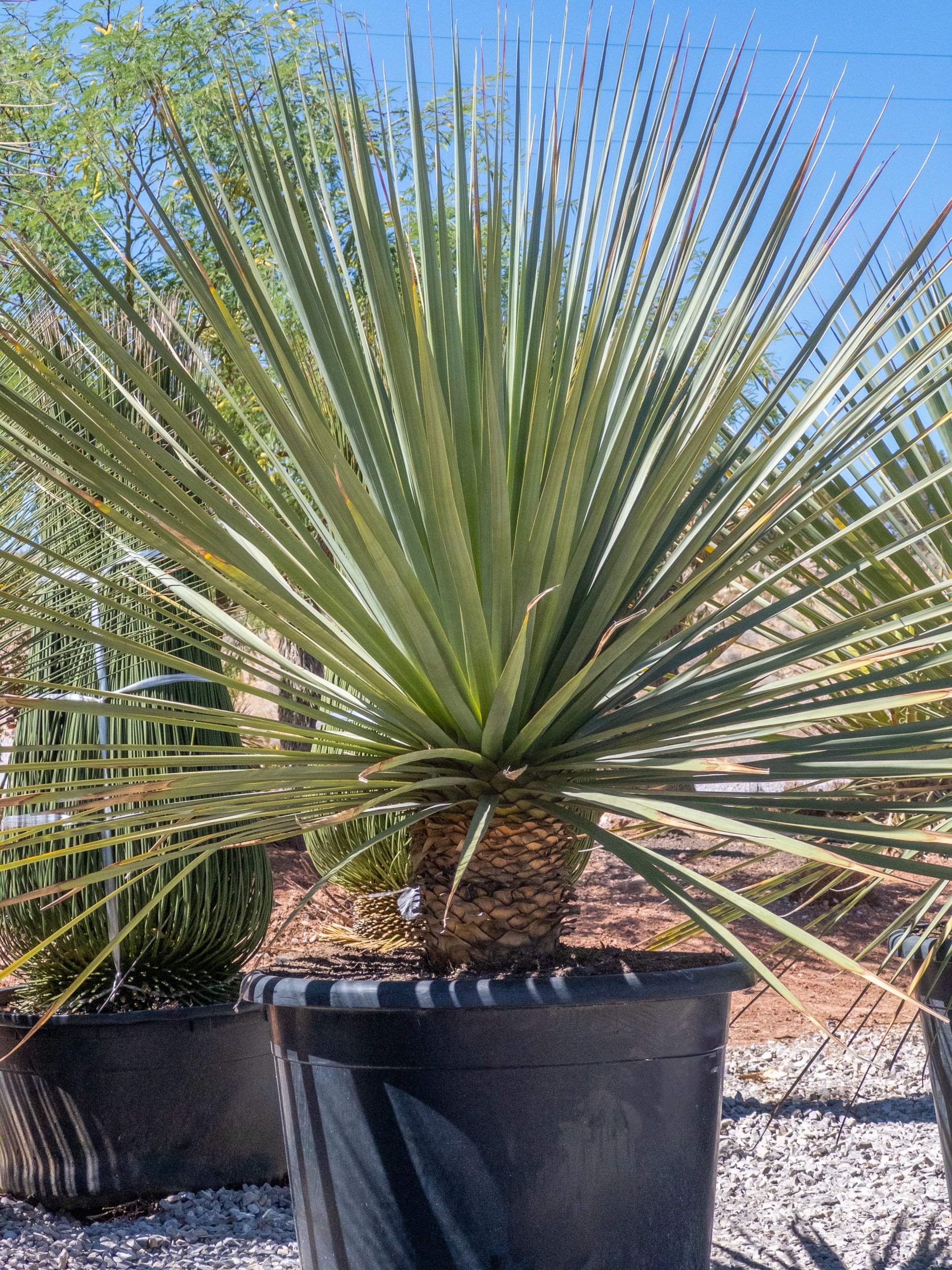 Image 1 of 5
Image 1 of 5

 Image 2 of 5
Image 2 of 5

 Image 3 of 5
Image 3 of 5

 Image 4 of 5
Image 4 of 5

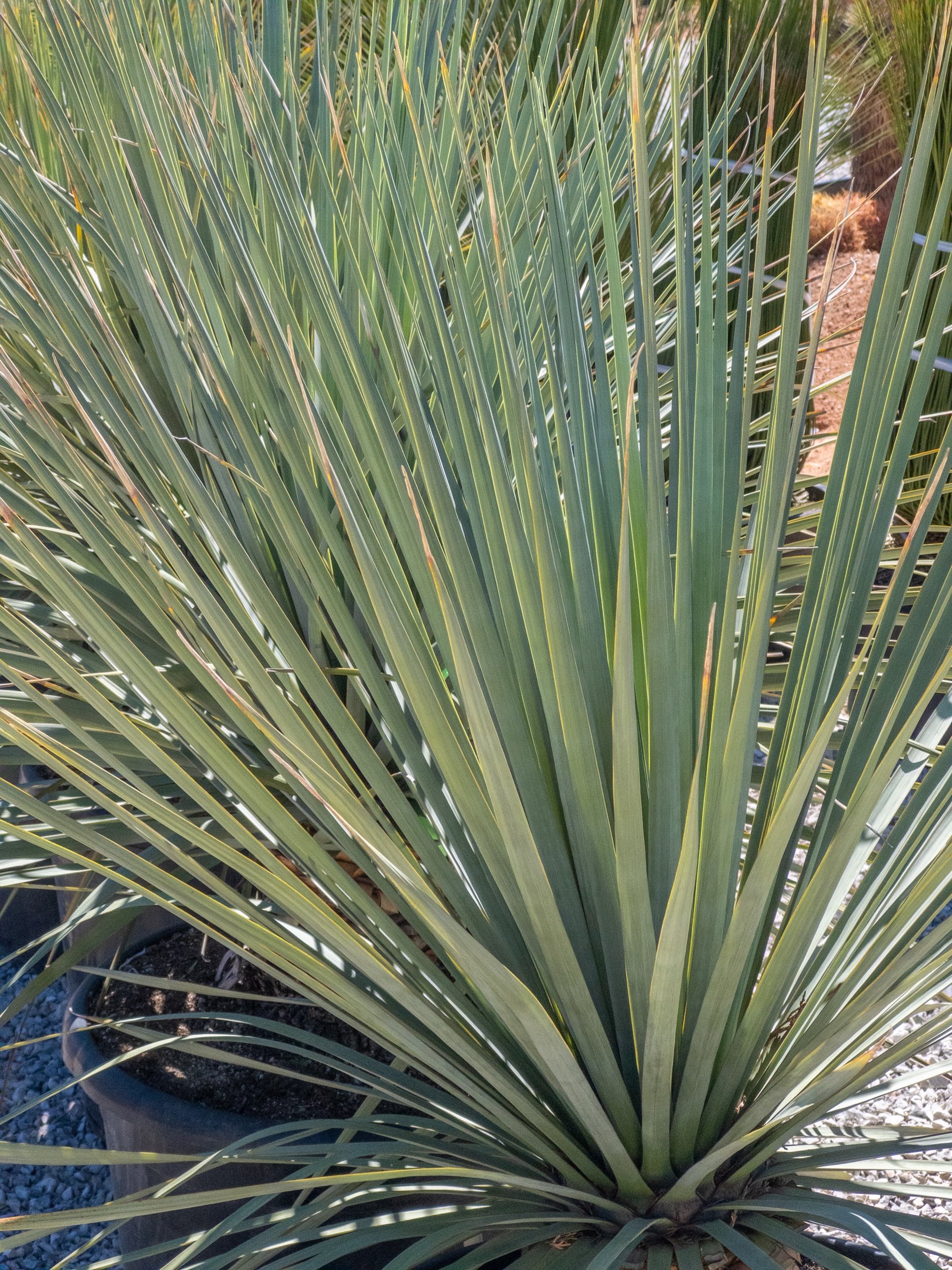 Image 5 of 5
Image 5 of 5






Nolina nelsonii
Nolina nelsonii – Blue Nolina
Elevate your desert garden with Nolina nelsonii, or Blue Nolina, a striking succulent that brings bold architecture to any space. Native to Mexico’s Tamaulipas region, this slow-growing beauty forms a dense rosette of long, narrow, silvery blue-green leaves, reaching 6-10 feet tall and 3-5 feet wide over decades. Each stiff, 2-3-foot-long leaf is edged with tiny, toothed margins, creating a fountain-like crown atop a trunk that can grow 10-12 feet tall with age. In summer, mature plants send up a towering 4-6-foot spike of fragrant white flowers, adding a dramatic flourish.
Care Snapshot:
• Sun: Full sun is its spotlight—6+ hours daily to keep its blue hue vibrant. Light shade works but may slow growth.
• Water: Drought-tough—water sparingly, about once or twice a month in summer, letting soil dry out completely. In winter, skip unless parched.
• Soil: Needs well-drained soil—cactus mix or sandy gravel ensures happy roots and no rot.
Perfect for rock gardens, xeriscapes, or large pots, this cold-hardy gem thrives in USDA zones 7b-10b, handling dry cold to 0°F (-18°C)—protect from wet freezes. Its shaggy skirt of old leaves adds wildlife habitat, though you can trim for a cleaner look. After flowering, the mother plant may die (monocarpic), but new shoots can rise from the base. Deer-resistant and low-maintenance, it’s a desert showstopper with a twist.
Nolina nelsonii – Blue Nolina
Elevate your desert garden with Nolina nelsonii, or Blue Nolina, a striking succulent that brings bold architecture to any space. Native to Mexico’s Tamaulipas region, this slow-growing beauty forms a dense rosette of long, narrow, silvery blue-green leaves, reaching 6-10 feet tall and 3-5 feet wide over decades. Each stiff, 2-3-foot-long leaf is edged with tiny, toothed margins, creating a fountain-like crown atop a trunk that can grow 10-12 feet tall with age. In summer, mature plants send up a towering 4-6-foot spike of fragrant white flowers, adding a dramatic flourish.
Care Snapshot:
• Sun: Full sun is its spotlight—6+ hours daily to keep its blue hue vibrant. Light shade works but may slow growth.
• Water: Drought-tough—water sparingly, about once or twice a month in summer, letting soil dry out completely. In winter, skip unless parched.
• Soil: Needs well-drained soil—cactus mix or sandy gravel ensures happy roots and no rot.
Perfect for rock gardens, xeriscapes, or large pots, this cold-hardy gem thrives in USDA zones 7b-10b, handling dry cold to 0°F (-18°C)—protect from wet freezes. Its shaggy skirt of old leaves adds wildlife habitat, though you can trim for a cleaner look. After flowering, the mother plant may die (monocarpic), but new shoots can rise from the base. Deer-resistant and low-maintenance, it’s a desert showstopper with a twist.
Nolina nelsonii – Blue Nolina
Elevate your desert garden with Nolina nelsonii, or Blue Nolina, a striking succulent that brings bold architecture to any space. Native to Mexico’s Tamaulipas region, this slow-growing beauty forms a dense rosette of long, narrow, silvery blue-green leaves, reaching 6-10 feet tall and 3-5 feet wide over decades. Each stiff, 2-3-foot-long leaf is edged with tiny, toothed margins, creating a fountain-like crown atop a trunk that can grow 10-12 feet tall with age. In summer, mature plants send up a towering 4-6-foot spike of fragrant white flowers, adding a dramatic flourish.
Care Snapshot:
• Sun: Full sun is its spotlight—6+ hours daily to keep its blue hue vibrant. Light shade works but may slow growth.
• Water: Drought-tough—water sparingly, about once or twice a month in summer, letting soil dry out completely. In winter, skip unless parched.
• Soil: Needs well-drained soil—cactus mix or sandy gravel ensures happy roots and no rot.
Perfect for rock gardens, xeriscapes, or large pots, this cold-hardy gem thrives in USDA zones 7b-10b, handling dry cold to 0°F (-18°C)—protect from wet freezes. Its shaggy skirt of old leaves adds wildlife habitat, though you can trim for a cleaner look. After flowering, the mother plant may die (monocarpic), but new shoots can rise from the base. Deer-resistant and low-maintenance, it’s a desert showstopper with a twist.

